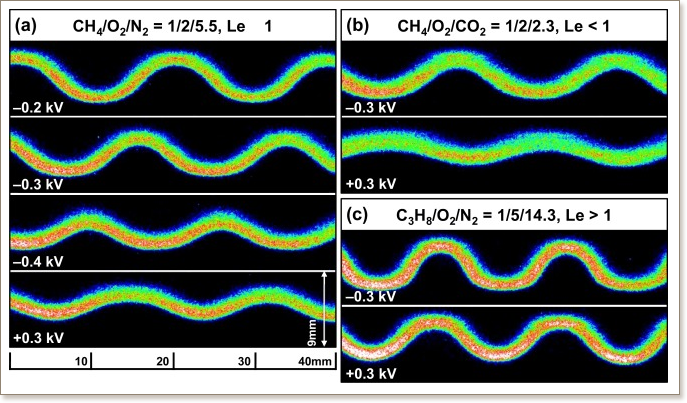

M.V. Tran, M.S. Cha
Combustion and Flame, 173, pp. 114-122, (2016)

Characteristics of propagating nonpremixed edge-flames were investigated in a counterflow, annular slot burner. A high-voltage direct current (DC) was applied to the lower part of the burner and the upper part was grounded, creating electric field lines perpendicular to the direction of edge-flame propagation. Upon application of an electric field, an ionic wind is caused by the migration of positive and negative ions to lower and higher electrical potential sides of a flame, respectively. Under an applied DC, we found a significant decrease in edge-flame displacement speeds unlike several previous studies, which showed an increase in displacement speed. Within a moderate range of field intensity, we found effects on flame propagation speeds to be negligible after correcting the flame displacement speed with respect to the unburned flow velocity ahead of the flame edge. This indicates that the displacement speed of an edge-flame strongly depends on ionic wind and that an electric field has little or no impact on propagation speed. The ionic wind also influenced the location of the stoichiometric contour in front of the propagating edge in a given configuration such that a propagating edge was relocated to the higher potential side due to an imbalance between ionic winds originating from positive and negative ions. In addition, we observed a steadily wrinkled flame following transient propagation of the edge-flame, a topic for future research.